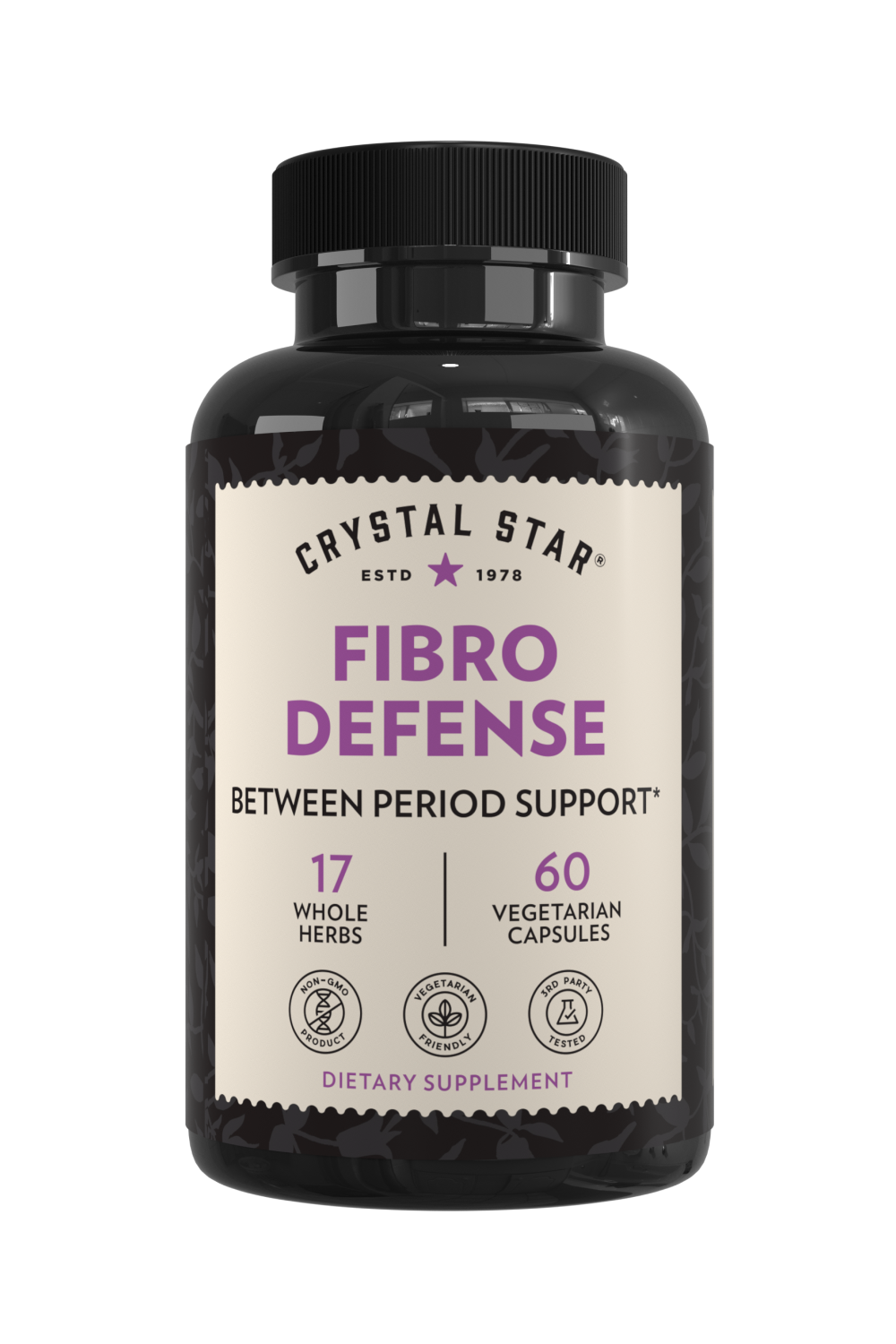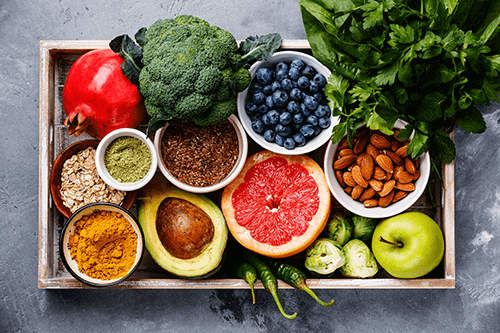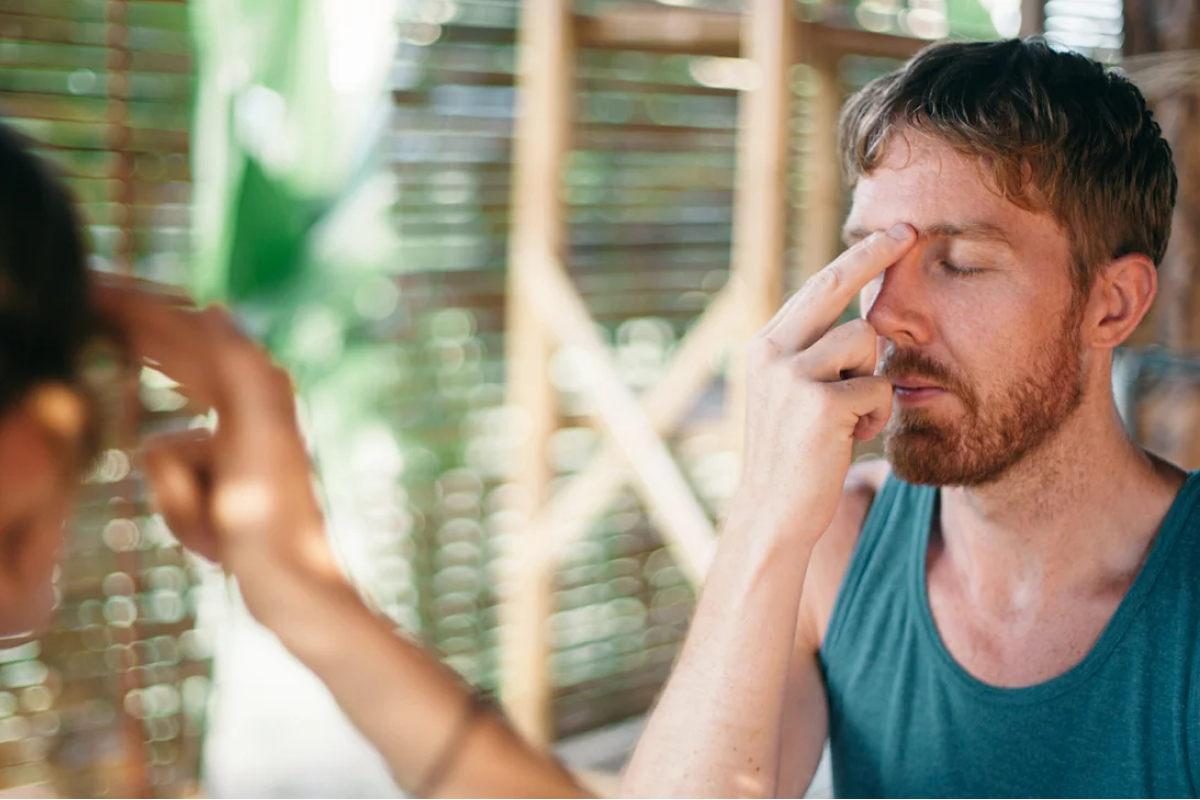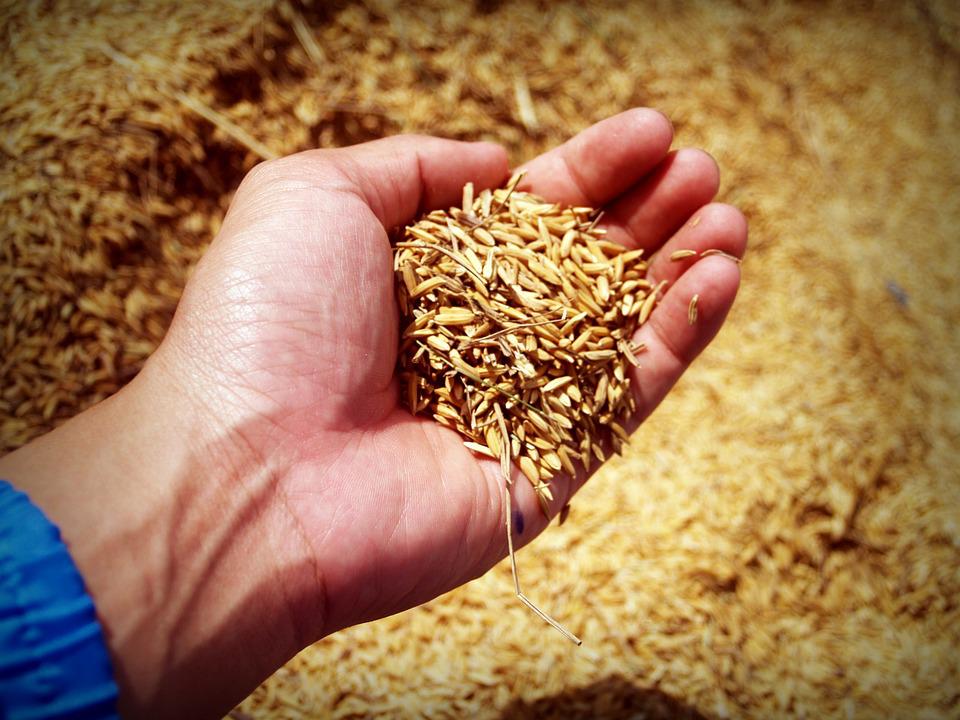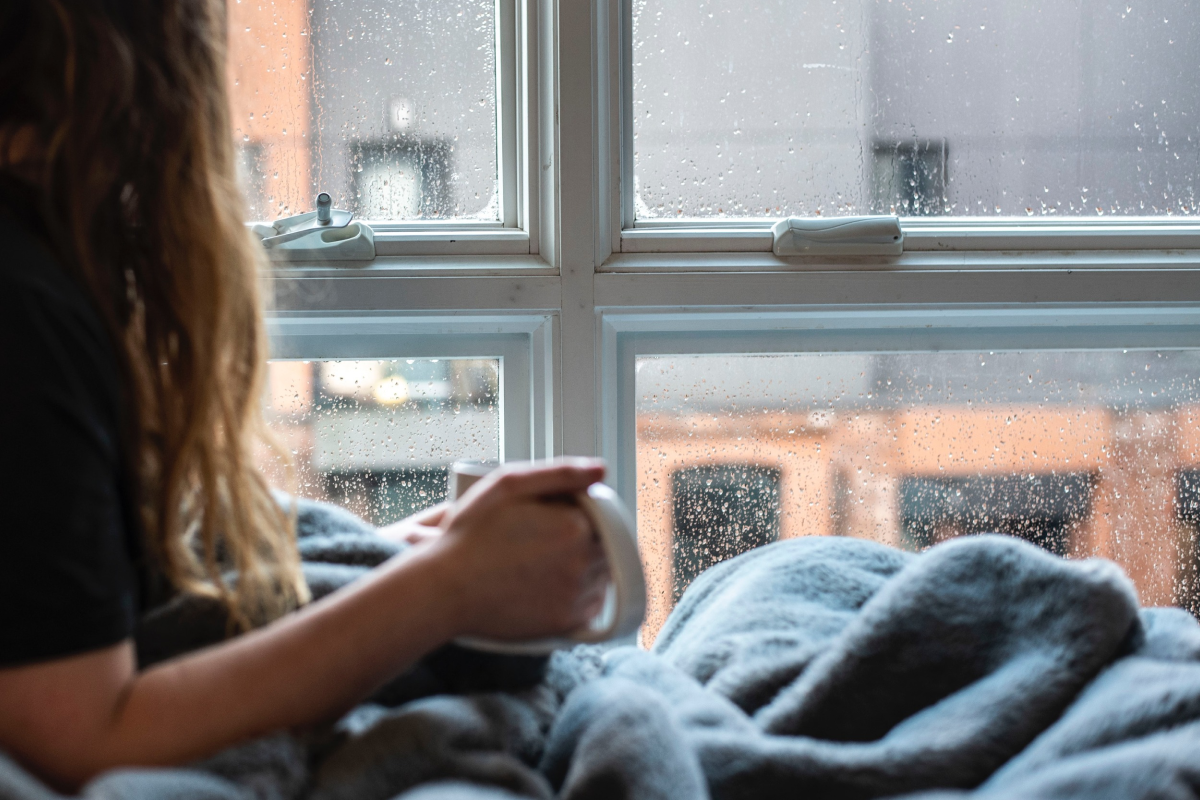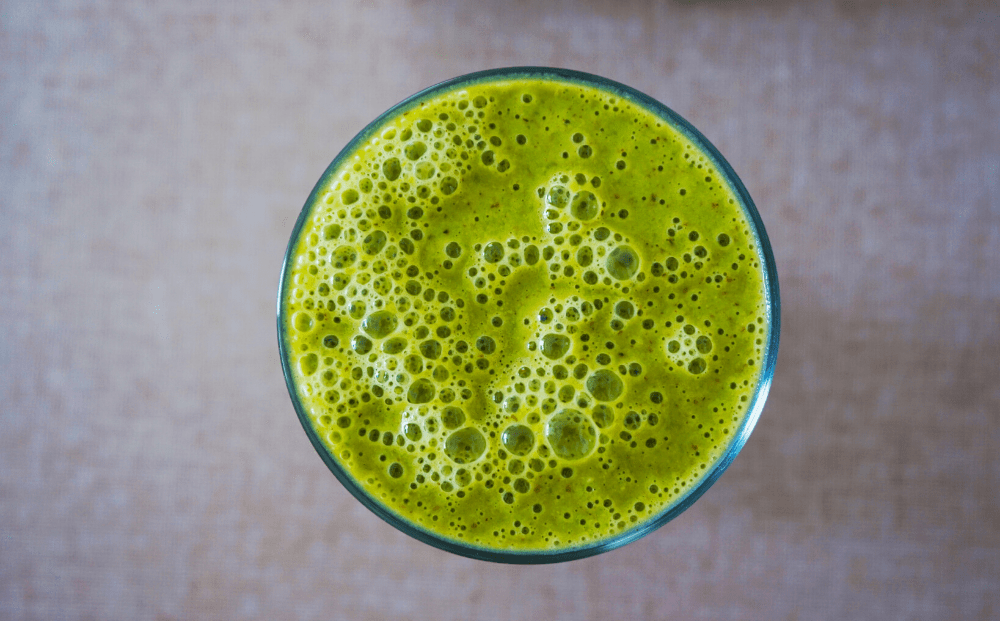
Grow your own herbal medicine cabinet? Yes, you can.
Getting into a better (and brighter) self-care routine can be a little daunting. This is especially true when you’re just starting to explore herbs and how they help various health states—there are so many to choose from (and so many different uses for them, too!).
As an herbalist and organic farmer, growing my own healing herbs has helped me better connect with herbal remedies.
But you don’t have to be an expert herbalist (or farmer/gardener/horticulturist) to grow herbal remedies. And you can grow herbs regardless of whether you live in the suburbs, the country, or in a tiny studio apartment (even one with one window and no garden space).
There are also tons of benefits to growing your own herbs, beyond learning more about them. Read on to learn what they are, and how you can get started growing herbs for your kitchen and medicine cabinet.
GROWING HERBS FOR HEALTH: WHY DO IT?
Growing your own herb garden at home may feel overwhelming at first. (Will I kill all my plants? Will it become just another chore?).
But the amount of work and expertise required all comes down to what (and how much) you want to grow.
It takes a little work at first, but growing herbs in the long run can make life (and self-care) just a little simpler and more enjoyable. You can even use your own homegrown herbs for minor first aid, digestive health, cold care, or support for a multitude of mild health conditions.
There are even more perks to growing your own herbs than this. Like:
YOU SAVE MONEY IN THE LONG RUN
It might not seem like you’re getting much savings at first. But the longer you grow your choice herbs, take care of them, and use them, the more those savings add up over time.
For example: each purchase of a 100-count peppermint supplement can range anywhere from $4-$8. Fresh peppermint at a farmers market or grocery store may cost $2-3 per bunch.
A single packet of peppermint seeds, on the other hand (typically costing between $1 and $4 per packet), can supply the same amount of peppermint you’d need for years and with less upfront costs. All you have to buy are the seeds, soil, and growing tools (with soil and containers adding an upfront cost of anywhere between $15 to $30) and with adequate care to keep your plants going, you spend less money getting the same amount of herb.
YOU KNOW YOUR HERBAL SOURCES ARE FRESH AND PURE
There certainly are herbs (and herbal formulas) you can source from reputable supplement companies that employ third-party testing for purity. But growing easy-to-cultivate herbs can help ensure you’re getting fresh herbs with the most possible benefits.
Some commercial drying methods (like ambient air drying, hot air drying, or sun drying) may compromise the potency and health benefits of certain herbs, like in these studies here and here. Growing your own fresh—and drying them correctly—can sometimes mean more powerful herbal remedies for you at home.
SOME HEALING HERBS ARE CULINARY CROSSOVERS
Growing and using your own herbs at home lets you experience for yourself that herbs are just nourishing foods. Some of the most popular medicinal herbs tend to also be culinary: such as sage, rosemary, oregano, thyme, and turmeric.
Sage may support respiratory health (as shown in studies here and here), rosemary may help perk you up, and turmeric has a whole host of potential health-boosting properties.
HERBS BEAUTIFY YOUR HOME
Healing herbs don’t just have practical purposes—they’re beautiful, too. A container (or two) can enhance your home, kitchen, patio, or garden’s appearance in many ways, giving your space a natural and relaxing vibe (which can be sort of healing in itself, too).
Some studies show that plants (possibly herbs as houseplants, too) may improve air quality of your indoor space, thus improving your health. They may also help provide “nature therapy” which has its own evidence-supported health benefits, too.
KNOWING WHAT HERBS LOOK LIKE HELP YOU REMEMBER WHAT THEY DO
In the quest for learning about herbs, getting visually acquainted with them as you grow them can help you understand what they do. There are even some herbalist tricks to help you remember each herb’s healing properties based on its appearance.
For example, ginger’s knobby rhizomes may look like joints, signifying its benefits for inflamed joints. Similarly, echinacea’s leaves may have a lung-like shape: a tell-tale sign for how it may reduce the risk of respiratory illnesses.
YOU’LL FEEL IN CHARGE OF YOUR HEALTH
Think about it: instead of running to the pharmacy or grocery store, you’re stepping onto your deck, your patio, or even into the next room to use remedies you’ve grown on your very own. Imagine harvesting fennel seeds from your garden for a stomach ache, grabbing a quick bunch of lemon balm for anxiety tea, or a yarrow leaf from your balcony planter for a small bleeding wound.
That satisfaction of growing your own wellness might make that journey to better health feel all that more gratifying—and empowering.
BASIC GROW-YOUR-OWN TIPS TO GET YOU STARTED
When you grow your own herbs, each herb will have slightly different growing techniques and approaches that go with it, so I encourage you to read up a bit on the best growing practices for each herb.
But in the meantime here are some general tips for growing medicinal herbs at home.
GROWING FROM SEED IS VERY DIFFERENT FROM GROWING FROM SEEDLINGS OR AN ALREADY MATURE PLANT
In most cases, “germination” (the technical term for sprouting a seed) is especially difficult, and germinating most herb seeds is no exception. Some even require freezing, ultra-specific light amounts, and are picky about moisture levels. If you feel confident or are an expert, growing herbs from seed can be an adventure. Beginners may want to stick with buying seedlings or already mature plants, though.
GROWING ANNUAL HERBS IS DIFFERENT FROM GROWING PERENNIAL HERBS
“Annual” means your herb will survive for only one year or one season. “Perennial” means it will come back year after year (and biennial means it will live for two years). Keep this in mind when selecting your herbs: do you want to have to replace your herbs every year with new seedlings? Then grow perennial herbs instead, like aloe, thyme, or echinacea (though some annuals do come back automatically by self-seeding).
GROWING HERBS IN CONTAINERS IS DIFFERENT THAN GROWING HERBS IN A GARDEN
In your garden, you’ll most likely have to weed, prune, and routinely fertilize your plants. This may require a bit more work and upkeep.
When growing herbs in pots, there’s less work, but still a few demands from your plants. You’ll also have to fertilize container plants specific a certain number of times throughout the year, and some perennials will need to be regularly divided and re-potted so their health doesn’t suffer living the “container life” (though in the long-term, this gets you more perennial herbs!).
WHEN IN DOUBT, USE A STANDARD GARDEN SOIL OR POTTING SOIL MIX
Most herbs prefer that perfect fluffy soil texture—that is, soil that strikes the perfect balance between water-absorbent and well-draining soil. That said, I still recommend you research the soil mix needs of each herb to get it right (aloe vera, for example, will prefer a sandier and less-absorbent soil mix).
RESEARCH EVERY SPECIFIC HERB’S WATERING NEEDS
Some herbs are water guzzlers; others easily experience root rot and disease with too much water. Make sure you know which category your herbs might fall in.
To bring up aloe vera as an example again: this desert plant hardly needs any water at all. On the other hand, a tropical herb like ginger needs plenty of moisture and soil that always feels just a little damp.
A helpful rule-of-thumb: annuals (save aloe and desert plants) tend to need less water, while perennials tend to need more (though this isn’t always the case. Make sure to research!).
NO GREEN THUMB (YET)? NO PROBLEM.
If you’re a nervous gardener, start with a single potted herb.You can even buy a mature plant instead of starting it from seed yourself— it still counts!
Once you’re comfortable with one herb, you can expand slowly from there (or not). You can buy the herbs below as container plants, though some are simple to start from seed indoors or outdoors. (These selections are difficult to kill, too.)
COMFREY
Known for supporting musculoskeletal health. Thrives in medium or small planters indoors or outdoors year-round, even with limited sunlight. Leaves can be harvested. Grows/spreads vigorously. Returns in spring.
HORSERADISH
Effective sinus and respiratory support. Staple ingredient in fire cider. Flourishes in a container until root is harvested. Also grows and spreads vigorously outdoors. Dies back in winter, returns in spring.
MARSHMALLOW
Digestive and respiratory herb. Spreads and grows vigorously, hard to accidentally kill. Best to grow in container outdoors or directly in garden—needs partial shade to full sun and can get quite tall.
MINT
This may include spearmint, peppermint, and in some cases certain varieties and subspecies of these two (like chocolate mint or orange mint). Can tolerate low light indoor conditions just as well as outdoor conditions. Great in either container or garden. Spreads and grows vigorously, difficult to kill. Supportive of digestive health.
LEMON BALM
Grown very similarly to mint (and is also a close relative). Combination healer for either digestive upsets or nervousness. Spreads and grows vigorously in the garden but can be limited to a container.
FOR THE SMALL HOME OR APARTMENT DWELLER
If your style is more urban living, there’s some healing herbs you can still manage to grow indoors, even under low light conditions—and whether you’re a beginner or more of an expert. Keep in mind: most will still need to be by the best source of light possible to thrive (don’t have amazing windows? Try buying a growing lamp!). In most instances, a south-facing window is your best choice.
ALOE
Inner leaf gel soothes cuts and burns. Best to purchase an already-established aloe plant and place near a sunny window. If the aloe is large and mature, it does just fine in a low light home or apartment.
BASIL
Have a southern-facing window? Basil can be an exceptional kitchen companion. Eating a bit each day may help heart health. Preferable to purchase a mature plant. Make sure to keep space warm—it likes heat.
PARSLEY
Like basil, parsley can withstand the indoors, though only if it’s near a window. Parsley is great for easing digestive complaints and is all-around nourishing. Does well in a container out of the garden.
THYME
Like the above herbs, thyme is a wonderful plant for the kitchen once established and set near a sunny window. Harvest sprigs to season meals—or, use it in tea for supporting immunity during coughs, colds, flus, and chest congestion.
FOR THE SEASONED GARDENER (WHO’S NEVER GROWN HERBS)
Been around the block as a gardener? Have your own container garden, balcony raised beds, full-on backyard landscape, or maybe some room to experiment on your country plot? If that’s the case (and if you’ve never tried growing medicinal herbs), these are great ones to try as a jumping-off point: they’re beautiful and useful, but require a bit more finesse and outdoor room.
If you’re still a beginner, these are great herbal options to “graduate” to at some point in the future.
ANGELICA
An outdoor-loving herb that matures into a towering flower. It’s sure to be a beauty and pleasure in any garden. Roots can be divided and harvested for digestive complaints and are supportive of women’s health.
ECHINACEA
A native prairie plant (also called purple coneflower) that prefers full sun. Great for reducing colds by boosting immunity. Echinacea’s vivid fuchsia flowers make it quite a sight to be seen and a popular choice for gardens.
VALERIAN
An aromatic plant with lush leaves and white blossoms. It’s relaxing for anxiety, stress, and sleep issues. Grows effortlessly (and beautifully) in gardens, coming back every year, even after winter.
FOR THE CULINARY ENTHUSIAST (OR KITCHEN WITCH)
Love cooking? Got a billion kitchen projects in mind (or already going)? Growing herbs with a health focus can be easy to tie in—many healing herbs are also incredibly flavorful, too.
GINGER
Yes, this tropical rhizome can be cultivated at home—even indoors. It also doesn’t need much light for those limited to small apartments or other urban settings. May support inflammation relief and ease nausea.
HOPS
What about beer brewing? Hops may be up your alley. You’ll need an outdoor spot to trellis this vining herb, plus some full sun. Hops may support digestion and stress.
GROWING HERBS IS ACTUALLY PRETTY SIMPLE
Regardless of where you live, your experience level, or what you’re looking to get out of herbs, growing your own herbal medicine cabinet can be fun and rewarding. It can also be healing, beautifying, and easier than you thought.
Best of all, growing herbs for health feels empowering—you’re taking charge of your own wellness. It’s a little magical, too, having a living medicine cabinet to whip up remedies (or delicious medicinal recipes) as you will.
I still remember the first time I used my homegrown potted rosemary and sage for facial steams and hot toddies to support respiratory health when I got a cold. The same goes for the first time (after gardening too long in my backyard!) I soothed a mild sunburn with help from my aloe plant’s leaves.
And guess what? These were the very first few herbs I grew for myself, before I slowly and manageably grew my collection from there. Anyone can do the same for themselves, too.
Cultivating your own medicinal herbs is frugal, enchanting, and incredibly satisfying. And if the above sounds too complicated to you, I promise you it’s not. You’ll realize just how easy and rewarding it is as soon as you get your hands dirty.
Adrian White is a freelance writer, herbalist, organic farmer, and co-owner of Jupiter Ridge Farm. Her healing approach combines plant-based nutrition, traditional herbalist knowledge, and modern research on botanical therapies. Her writing has appeared in The Guardian, Civil Eats, Rodale’s Organic Life, and Good Housekeeping.


